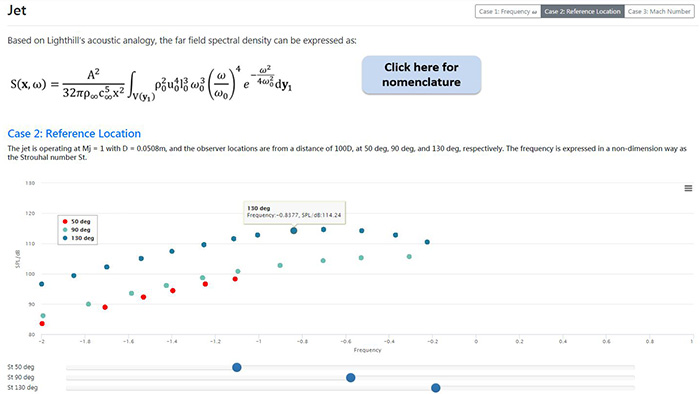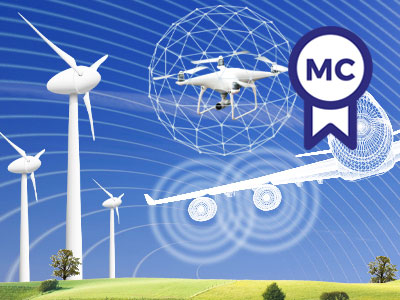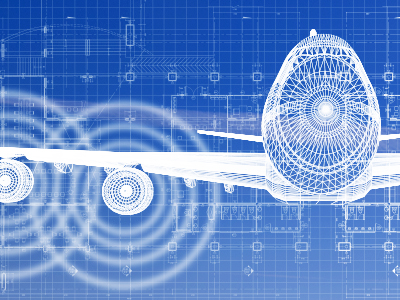Overview
Course video
Learn how to reliably evaluate noise in a variety of mechanical systems and develop basic noise reduction strategies to improve their aerodynamic design and performance.
Finding the right balance between achieving maximum aerodynamic performance and lowering the noise output to comply with regulations and ensure people's comfort and health is a complicated task.
Many companies are nowadays asking for combined aeroacoustic and aerodynamic knowledge and for many engineers it can be difficult to translate complex aeroacoustic theories into practical design applications.
In this course you will acquire the knowledge and tools required in this challenging field, including aerodynamic design guidelines to maintain or improve machine performance.
You will review fundamental aeroacoustic principles and propagation theories in order to estimate the sound generated by a variety of mechanical systems. You will also explore dedicated noise-reduction strategies to understand how to improve the aeroacoustics of potential design solutions.
Apply this knowledge to your own work
After learning the fundamentals of aeroacoustic sources of noise, you will apply the knowledge gained to practical, industry‑relevant exercises. During the course you will learn how to change the aerodynamic performance of one mechanical system of your choice (an aircraft propeller, a wind turbine, a wing with flap and/or a jet in proximity of a wing) to obtain a quieter device.
This course includes special lectures and material by leading companies, including Siemens/Gamesa, GRAS Microphones and National Instruments. You will also gain access to online tools and resources to tailor your formulations to your own test‑cases, and you will receive personalized advice and feedback from international experts in the field of aeroacoustics.
After taking this course you will be able to:
- Analyze fundamental noise source mechanisms and their origin
- Analyze and evaluate the sources of noise in different mechanical systems
- Design a strategy to work within noise regulations without compromising aerodynamic performance
- Identify the most important aerodynamic parameters that affect the noise generation (e.g. performance of the system and operating regimes)
- Evaluate the optimum design and recommend improvements on the original one
This course has been supported by the DigiWind project, co-funded by the European Union under Grant Agreement No. 101122836. Views and opinions expressed are however those of the author(s) only and do not necessarily reflect those of the European Union or the European Health and Digital Executive Agency. Neither the European Union nor the granting authority can be held responsible for them.

Details
Knowledge of the fundamentals of aerodynamic flows is important for an optimal aeroacoustic design. This course will offer coverage of the main principles required to successfully follow the course. Most textbooks and courses on this topic are either limited to an analytical treatment of relatively simple problems, or they focus on operational aspects without a thorough treatment of the physics.
This course is part of our Program in Aeroacoustics. The complementary course Aeroacoustics: Measurement Techniques explores the most important measurement techniques for noise evaluation.
Is this course for you?
This course offers career‑oriented benefits depending on your professional background and interests:
- Professional engineers with an applied background (e.g. mechanical, aerospace, electric, applied physics, mathematics).
Whether working in the aerospace/aerodynamic/wind energy industry or on the aerodynamic and aeroacoustic design of a specific mechanical system, this course will be beneficial due to its focus on multi‑disciplinary design, which accounts for performance, comfort and low noise footprint. You will benefit from an improved capacity to develop optimal system designs and thus ultimately become more effective in decision‑making within multi‑disciplinary projects.
- Young professionals or entrepreneurs interested in the design of mechanical systems with the target of certification or personal development.
This course can prove a great addition to your portfolio when considering a spin‑off in engineering and mechanics, where technology needs to encompass several disciplines to produce the best solutions.
- Students at the MSc/BSc level aiming to enter the world of experimental or numerical aerodynamics/aeroacoustics.
If you intend to work in the aerospace/propulsion/wind energy industry or you are interested in pursuing a MSc degree in aerospace engineering, this course can bridge the gap between aerodynamics and acoustics, with a practical view on the design of a variety of mechanical systems.
Industry Example:
Less noise and optimum performance in onshore wind turbine applications
A low noise wind turbine offers high performance at low to medium wind speeds. The model includes aerodynamic add‑ons to its rotor blades. To achieve low noise levels, the engineers worked on the aeroacoustic optimization of the blades that allowed almost silent operation of the new turbine. As reported in the company's magazine, this aeroacoustic solution was inspired in nature: "To bring down both the noise and the cost of onshore power, Siemens turbine blade designers have patterned a new design on the model of owl feathers‑an approach known as "biomimicry" ‑that keeps noise levels down and allows greater energy output without exceeding sound thresholds.
Generally, mechanical noise emanating from the gearbox or generator can be suppressed; the dominant source of noise stems from the aerodynamics of the blades themselves. Specifically, it is the trailing edge noise created by turbulence on the outer 25 percent of the blade that Siemens engineers have been working to eliminate.
In an ingenious example of industrial design emulating nature, the serrated blade edge is combined with comb‑like teeth to produce a porous trailing edge, reducing noise by over 10 percent compared with the previous industry standard.
While residents in adjacent neighbourhoods can thus be spared sound pollution, the new turbine should also give consumers and operators an edge in the market: Beyond the creative engineering of the blade, which allows power output to be preserved in restricted zones such as near residential areas, the optimized generator and a modularized component concept help to bring down the levelized cost of energy (LCoE) for wind power even further."
Sources:
- "New Siemens onshore wind turbine offers less noise at optimum performance"- Wind Power and Renewables Division Siemens AG -
- "Less noise – higher payoff" (Christopher Findlay - Siemens, The Magazine)
Course structure
The course has four modules focusing on the fundamentals of aeroacoustics and sources of noise in mechanical systems. Participants will be able to choose examples in different systems depending on their interests or experience. Each module has a workload of approximately six hours. For successful completion of the course and to receive the Certificate of Completion you should pass at least three regular modules. Regardless of the module choice, the content of all other modules can be accessed even without fully completing their assignments.
Modules
Module 1:
- Introduction to sources of noise
- Sources of noise in aircraft propellers, wings, jets, wind turbines
Module 2:
- Influence of regulating parameters in the noise sources (e.g. speed, rpm, etc.)
- Performance and aeroacoustic design
Module 3:
- Test case for combined aeroacoustic and aerodynamic design
- Evaluation of the performance of the new design proposition
Module 4:
- Preview of experimental applications for noise measurements
Assessment
Each module includes quizzes and exercises. These can vary from straightforward multiple‑choice questions to more detailed calculations. Module 2 and 3 present two assignments which consist of a test case for the optimization of a combined aerodynamic and aeroacoustic design.
Resources
All necessary course materials will be provided online, you do not need to purchase additional books. You will also gain access to online‑tools and resources to tailor your formulations to your test‑cases.

Qualifications
Certificates
If you successfully complete this course you will earn a professional education certificate and you are eligible to receive 3.0 Continuing Education Units (CEUs).
Chartered Engineering Competences
All our online courses and programs have been matched to the competences determined by KIVI’s Competence Structure, a common frame of reference for everyone, across all disciplines, levels and roles.
These competences apply to this course:
- A1: Extend your theoretical knowledge of new and advancing technologies.
- E3: Undertake engineering activities in a way that contributes to sustainable development and a circular economy.
Admission
This course is primarily geared towards working professionals.
Prerequisites:
Knowledge of fundamental aerodynamics and calculus is an asset to the course. However, the course will fill in any gaps of knowledge in physics.
Contact
If you have any questions about this course or the TU Delft online learning environment, please visit our Help & Support page.



